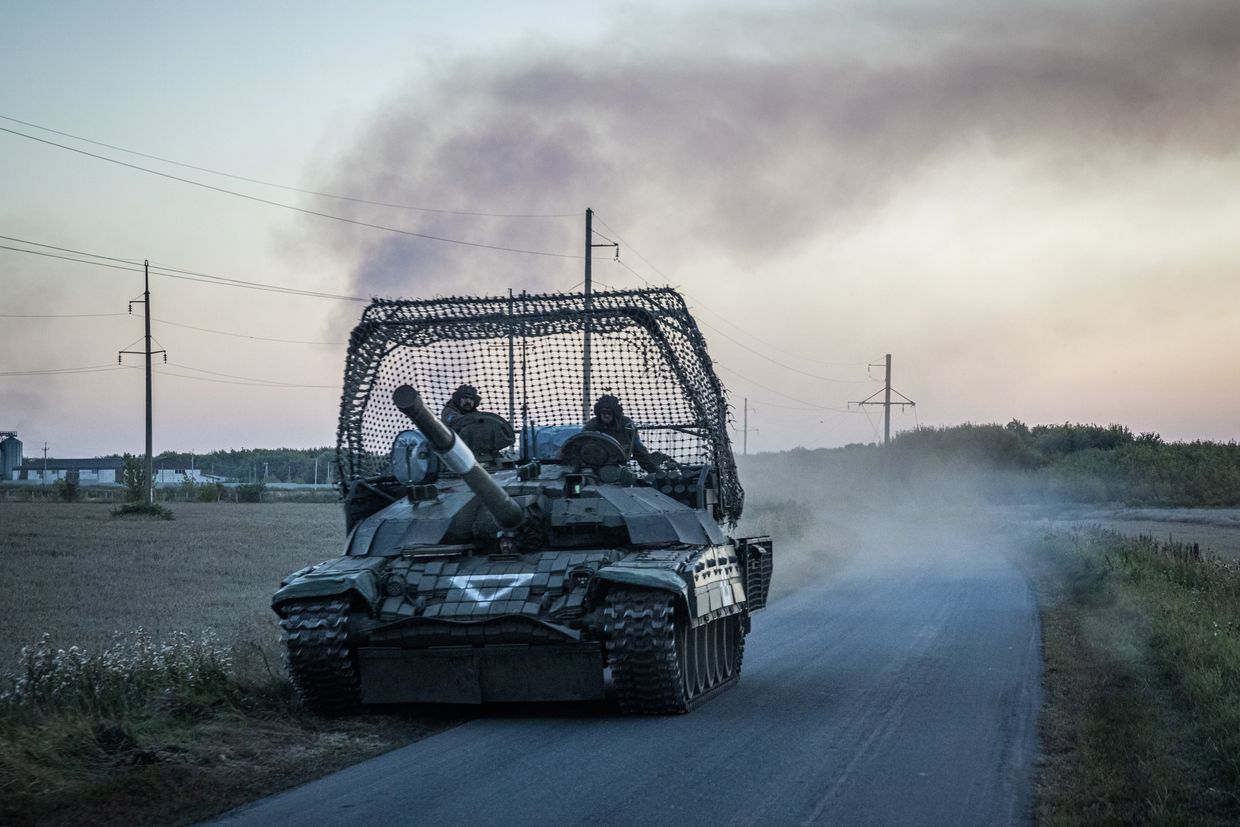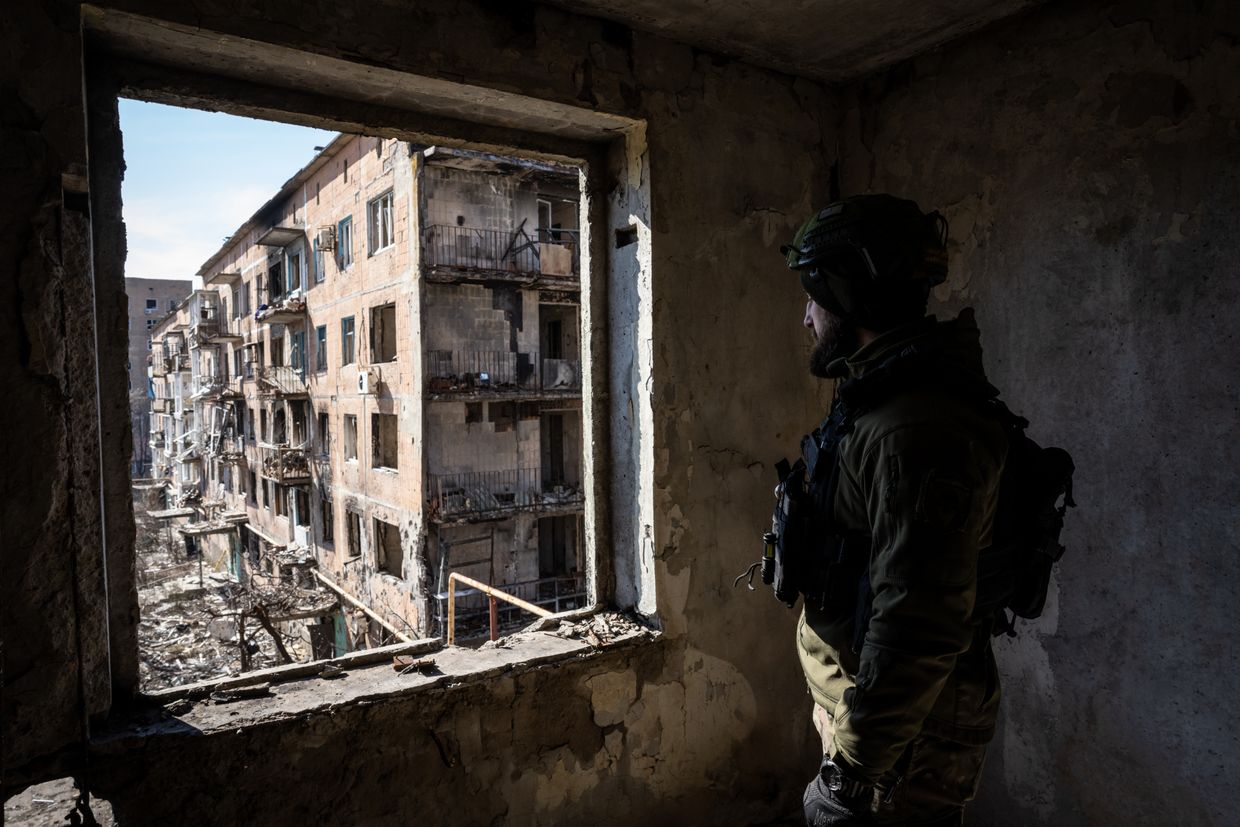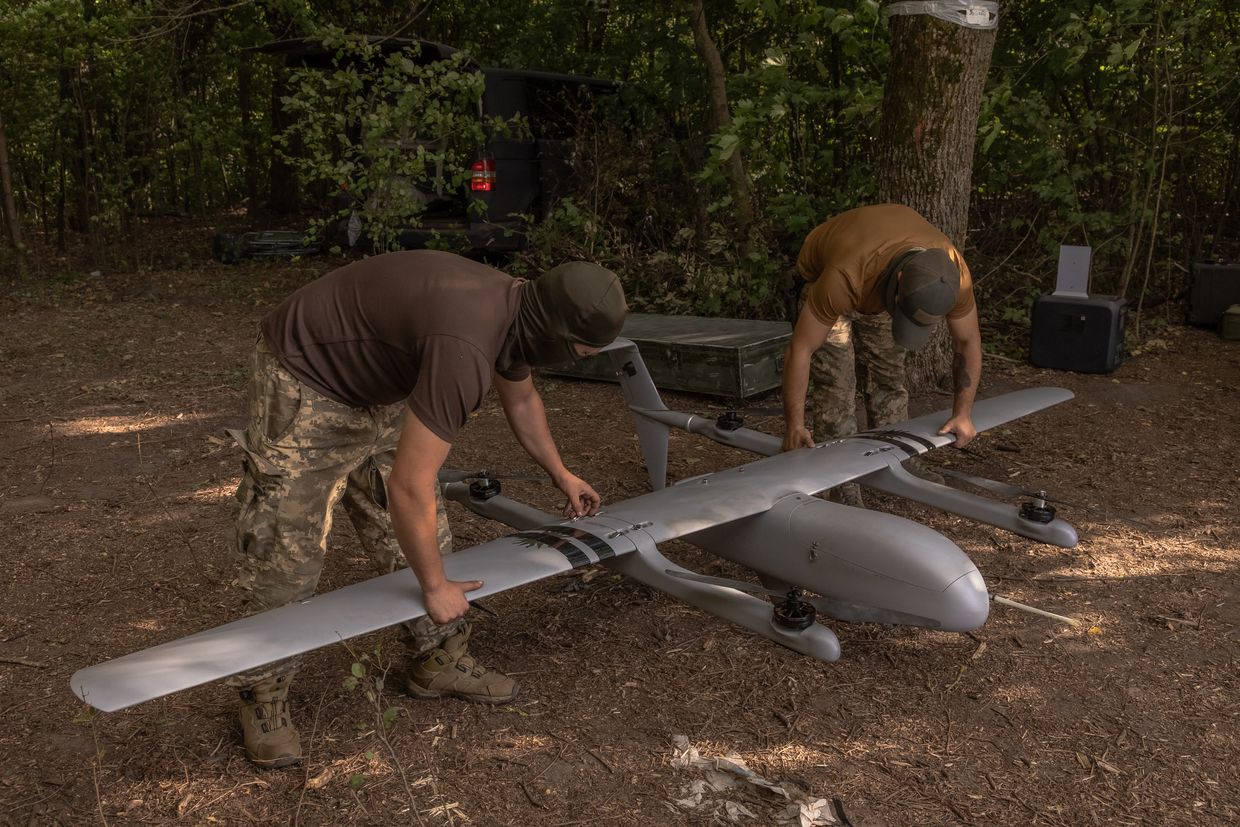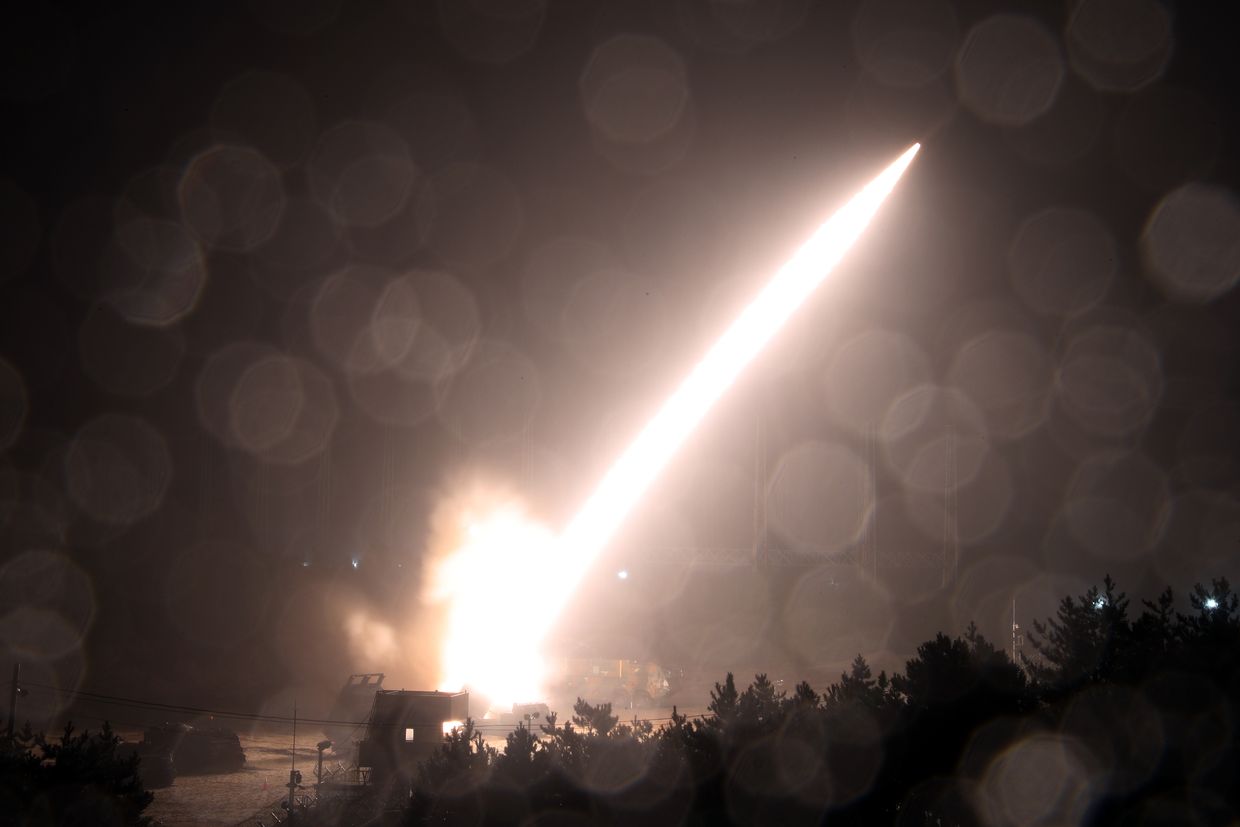Ukraine war latest: Russian forces recapture 10 settlements in Kursk Oblast amid ongoing counterattack, Moscow claims

Key developments on Sept. 12:
- Russia claims to have recaptured 10 settlements in Kursk Oblast amid ongoing counterattack
- Russia pushing toward Kurakhove in Donetsk Oblast from several vectors
- Ukraine downs Russian Su-30 aircraft above Black Sea, military intelligence claims
- Zelensky urges the West to allow long-range strikes without distance limits
- Pentagon allocates $1.2 billion for production of AMRAAM missiles, including for Ukraine
The Russian Defense Ministry claimed on Sept. 12 that Russian soldiers had regained control of 10 settlements earlier captured by Ukraine in Kursk Oblast.
The statement follows reports claiming that Moscow had launched a counterattack in the embattled Russian region, which has been partially held by Ukrainian forces since the start of the cross-border incursion on Aug. 6.
President Volodymyr Zelensky confirmed these claims on Sept. 12.
"Everything is going according to our plan," he said at a press conference with Lithuanian President Gitanas Nauseda.
Snagost, one of the villages allegedly recaptured by Russia, lies around 30 kilometers (20 miles) west of the Ukrainian-held Russian town of Sudzha and around 10 kilometers (6 miles) north of the Ukrainian border.
The Kyiv Independent could not verify the Russian Defense Ministry's claims.
The Ukrainian crowd-sourced monitoring group DeepState wrote on Sept. 11 that the "situation on the left (western) flank of Ukrainian forces in Kursk Oblast has worsened."
"Russians began active assault operations, ferrying armored vehicles across the Seim River and other smaller rivers." Ukraine was previously targeting bridges and pontoon crossings across the Seim River in an apparent attempt to cut off Russian troops in the Glushkovsky district.
Zelensky said on Sept. 6 that Ukraine controls over 1,300 square kilometers and around 100 settlements in Kursk Oblast. According to Kyiv, the incursion was meant to divert Russian forces from Donbas and to prevent further Russian cross-border attacks from Kursk Oblast.
Russia pushing toward Kurakhove in Donetsk Oblast from several vectors
Russian troops are pushing toward the town of Kurakhove in Donetsk Oblast from three directions, but their advance has slowed down, Nazar Voitenkov, an acting spokesperson for Ukraine's 33rd Separate Mechanized Brigade, told Radio Free Europe/Radio Liberty (RFE/RL) on Sept. 12.
Kurakhove is located west of Russian-occupied Donetsk and some 30 km (18 miles) from the town of Pokrovsk. Both Kurakhove and Pokrovsk are among the key goals of Russia's intensified offensive in Donetsk Oblast.
Voitenkov said that if Russia captured Kurakhove, its forces could reach strategically important eights over the town. There is no such danger at the moment, he added.
"The Russians are really just trying unsuccessfully to do something here. If we see any movement, then most often these columns – tank columns, armored columns – will advance toward our units on the left or right," Voitenkov said.
"In our direction, they do not succeed in anything at all."
Compared to the Pokrovsk and Vuhledar sectors, Kurakhove is located "in the relative rear," Voitenkov said, citing the crowd-sourced DeepState monitoring service.
While there are signs of stabilization near Pokrovsk, the focal point of the Russian offensive in Donetsk Oblast, Moscow's troops have recently ramped up their offensive near Vuhledar, the mining town that lies around 50 kilometers (30 miles) southwest of occupied Donetsk and around 40 kilometers (25 miles) east of the administrative border with Zaporizhzhia Oblast.
"As I see it, the town (Kurakhove) is preparing for defense, digging trenches, anti-tank ditches, and places that could become a potential stronghold for the Russians to prevent them from moving on to the next settlements," Voitenkov added.
Ukraine downs Russian Su-30 aircraft above Black Sea, military intelligence claims
Ukrainian soldiers shot down a Russian Su-30SM aircraft during an operation in the Black Sea, Ukraine's military intelligence (HUR) said on Sept. 12.
The Su-30SM was reportedly destroyed by a man-portable air defense system and belonged to the 43rd Separate Naval Aviation Regiment of the Russian Aerospace Forces, which is based at the Saky air base in occupied Crimea.
The fighter jet has an estimated price tag of around $50 million.
The Russian military lost contact with the flight crew on the morning of Sept. 11, according to HUR. Soon after, Russia launched a search and rescue operation using an An-26 aircraft and Mi-8 and Ka-27 helicopters, the agency said.
"The (Russian military) briefed the command about a distinctive stain of aviation fuel in the sea, 70 kilometers (45 miles) northwest of Cape Tarkhankut, and soon saw the wreckage of the destroyed Su-30SM," HUR said.
The Kyiv Independent could not verify these claims.
The agency did not disclose details of the operation in the Black Sea. The Russian Defense Ministry claimed on Sept. 11 that its forces had thwarted Ukraine's attempt to regain control of the Krym-2 drilling rig in the Black Sea.
There is no evidence that the two events are connected. The military intelligence agency has not responded to the Kyiv Independent's request for comment.
Navy spokesperson Dmytro Pletenchuk said that as of mid-August, Russia was using only five military airfields in occupied Crimea, two of which were hit by the Ukrainian military and were functioning "at a minimum."
Zelensky urges the West to allow long-range strikes without distance limits
President Volodymyr Zelensky insisted on Sept. 12 that restrictions on the use of Western long-range weapons to strike deep inside Russia should be lifted without any distance limits.
Zelensky's statement comes amid reports that the U.S. and the U.K. might soon shift the policy, allowing Ukraine to strike on Russian territory with their long-range weapons.
According to Zelensky, the delays in the decision have already prompted Russia to move its military targets deeper into Russian territory.
If the West plans to lift the restrictions only for a range that Russia has already adapted to, then "this is a purely political decision to relieve pressure coming from allies, Ukraine, and journalists on the countries that have to make this decision," Zelensky said at a press conference with Lithuanian President Gitanas Nauseda.
"If restrictions are lifted on a weapon for which (Ukraine doesn't have) missiles, this is not lifting restrictions."
Zelensky added that he wants to see allies making the move to allow long-range strikes with Western weapons "as a strategy for Ukraine's victory, not a political strategy."
Earlier on Sept. 11, Zelensky met with U.S. Secretary of State Antony Blinken and U.K. Foreign Secretary David Lammy in Kyiv.
Zelensky said he had given them a very "direct and detailed" vision of what kind of lifting of restrictions on long-range strikes Ukraine needs. Ukraine's delegation was "well prepared" and "convincing," according to the president.
Ukraine has received shipments of long-range U.S.-made ATACMS and U.K.-made Storm Shadowmissiles, but the two countries have not permitted their use inside Russian territory so far.
While the Western countries eased restrictions on the use of certain arms just across the border after a Russian offensive in Kharkiv Oblast in May, limits on long-range strikes deep inside Russia remained in place.
Multiple Western outlets, such as Politico and the Guardian, recently wrote that this position may be shifting as U.S. and U.K. officials are preparing plans to ease the restrictions further.
Pentagon allocates $1.2 billion for production of AMRAAM missiles, including for Ukraine
The U.S. Defense Department awarded a contract worth around $1.2 billion to the Raytheon defense contractor for the production of air-to-air AMRAAM missiles, the department said on Sept. 11.
This will include foreign military sales to Ukraine and other countries, including Bahrain, Bulgaria, Canada, Finland, Germany, Hungary, Italy, Japan, Norway, Switzerland, and the U.K.
The AIM-120 AMRAAM is a beyond-visual-range radar-guided missile used as air-to-air weaponry by American and allied fighter jets. Ukraine can deploy these missiles from its new F-16 fighters and ground-based anti-aircraft platforms to fend off Russian aerial strikes.
The missiles, spare parts, and other associated equipment will be produced in Tucson, Arizona, and are estimated to be completed by Dec. 31, 2028.
Kyiv has been increasingly calling for faster deliveries of anti-aircraft weapons and ammunition as Russia launched a new wave of drone and missile attacks against Ukrainian cities in August.
The U.S. previously announced a new $250 million aid package for Ukraine during a Ramstein group meeting on Sept. 6, pledging air defense missiles, armored vehicles, artillery shells, and other supplies.















